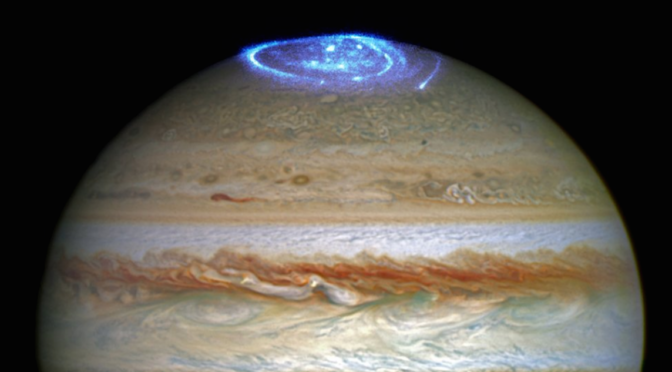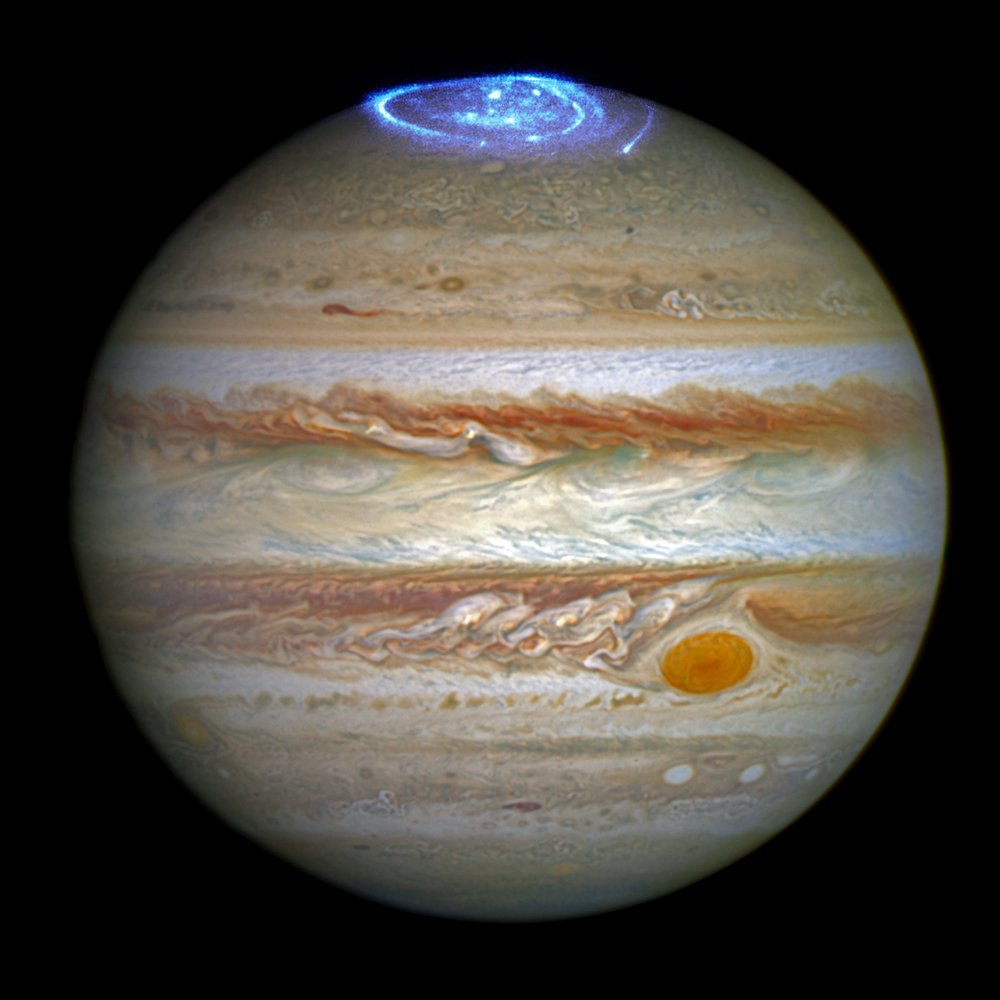Recently, the Hubble telescope captured some incredible images of an aurora on Jupiter which is perfect timing when you consider that the Juno spaceship is set to arrive at Jupiter in early July.
Auroras are incredibly beautiful light shows that appear in a planets atmosphere around it’s poles. Jupiter is the largest planet so seeing an event this large is both baffling and exciting when you consider how huge this aurora is.
Jupiter has long been known for its very large and colorful storms. The biggest of these storms is the Great Red Spot that you can see clearly raging on its surface. Astronomers have been able to admire and study the planet through the use of the Hubble Telescope’s ultraviolet capabilities.
Auroras as often created from high-energy particles entering the atmosphere of the planet near the electromagnetic poles. These high-energy particles collide with the atoms of gas which will create beautiful and vivid images in the sky.
Astronomers are studying these events to better understand how the different conditions from solar wind. The Juno spacecraft is about to enter orbit around Jupiter and it will be able to collect data about the auroras including solar wind.
“These auroras are very dramatic and among the most active I have ever seen,” said Jonathan Nichols of the University of Leicester, UK.“It almost seems as if Jupiter is throwing a fireworks party for the imminent arrival of Juno,” Nichols said inpress release.
Unlike our auroras here on earth which come and go Jupiter have them all the time. They are gigantic and “hundreds of times more energetic than auroras on Earth,” the agency said.
Sources-
Image Credit: HubbleTelescope


